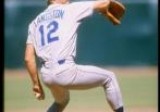Hello.
The interesting name of a site - seattlesportsinsider.com, interesting this here is very good.
I spent 3 hours searching in the network, until find your forum!
Q. Young two-pitch beast LHP's tend to add pitches in the majors, right?
A. Right. Sabathia went 17-5 as a rookie, 171 strikeouts in 180 innings, throwing only two pitches.
In Sabathia's second season, he was real good again, and beginning in that year (2002) we have the F/X data:
- 70.1% fastballs, 92 mph
- 23.2% curve balls, 78 mph
- 6.7% something else, 80 mph (these were undoubtedly curves)
 But, of course, anybody with an arm like Sabathia's (or Paxton's) can learn some kind of grip that makes the ball swerve, and beginning year 3, Sabathia started using a change.
But, of course, anybody with an arm like Sabathia's (or Paxton's) can learn some kind of grip that makes the ball swerve, and beginning year 3, Sabathia started using a change.
We can only hope for the same from Paxton: that he uses a simple attack orientation to get good, and that he worries about complexity later.
.
Q. Did that pattern hold for Price and Lester?
A. Yeah, there are two other great LHP power guys in the AL right now, Price and Jon Lester. David Price hasn't bothered with a third pitch yet, though he will later.
In fact, David Price throws 75% fastballs still. Think about that for a moment. He's been doing it for two years, and the AL hitter population is losing ground to the kid.
That's because a mid-90's LHP fastball is a horrible weapon to behold. Whether it's up or down, whether it's off the plate away or in on the hands, hitters just aren't used to the ball. They see it only rarely.
.
Q. Why is a 95 lefthand fastball tougher than one from the right side?
A. Remember, 25-30% of ML pitchers are lefty -- but only 9-10% of American males (and 7-8% of international males) are lefty.
So righty pitchers go through a much tougher selection process; they average about 2 mph more on their fastballs ... and the hitters just don't face many pitches from Kershaw's angle and depth in the zone.
A 95 LHP fastball is in some ways like a knuckleball - the hitters just don't see it well. And that can hold up for twenty years, as it did for Randy Johnson.
Go, Mr. Robles...
.
Jon Lester mixed his pitches well as a rookie, but he's also an example of a guy whose game took on the MLB(TM) sheen only in his 3rd-4th years. In 2008-09, Lester added The Notorious Cliff Lee Cutter and started out-thinking hitters. He was an evolution.
.
Q. These pitchers tend to arrive in the bigs early?
A. Yes. Kershaw, Langston, Lester, and others give the idea.
.
Q. Do these guys tend to have long careers?
A. Haven't studied it, but that's definitely my psychic echo... a lot of Jeff Fassero types going 100,000 miles down the road...
- 95 fastballs pitch longer than 89 fastballs. The pitcher isn't straining to achieve acceptable velo.
- High strikeouts last longer than finesse guys.
- Left handers certainly last longer than other guys. They're more centrifugal than righties.
- Tall guys last longer.
I seem to remember a lot of Jeff Fasseros and Steve Carltons and David Wellses who were healthy longer than they were good, guys you had to rip the jersey off their backs. Paxton certainly has the template, if not the background, for plus durability.
.
Q. This pitcher family is all upside? What's the downside?
A. That they're hard to find?
They can be wild. They can be weird fielders, lousy hitters, they can be flakes... Chuck Armstrong complained that Randy Johnson "was as high-maintenance as anybody in the league" ... we imagine that you've read a few things about Steve Carlton and Lefty Grove.
.
.